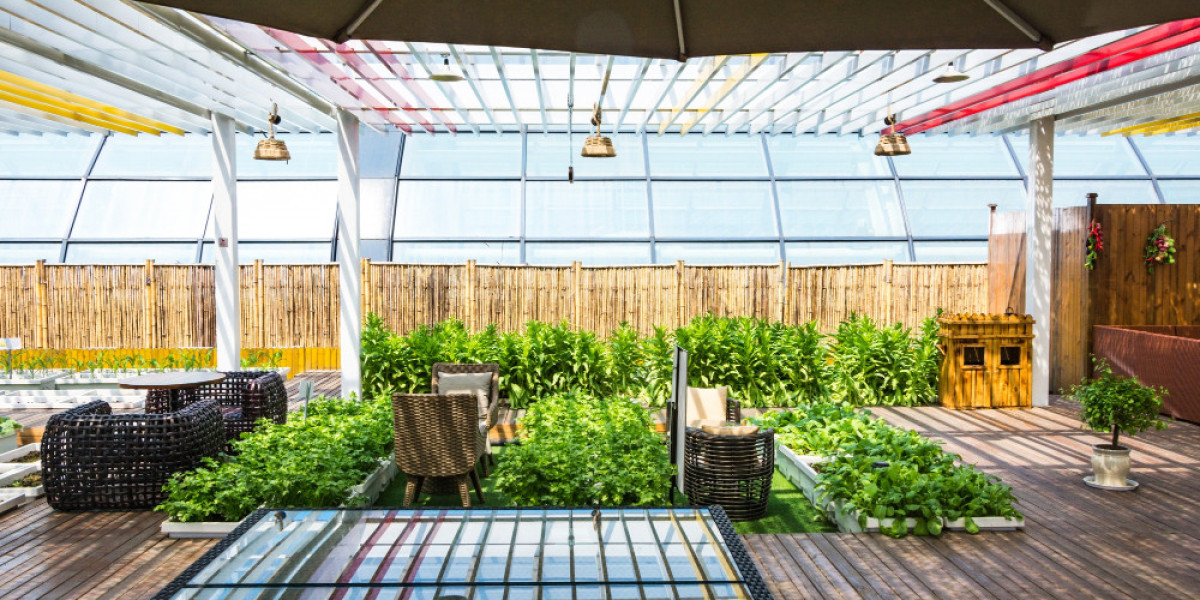Outdoor living spaces have become a key feature of modern homes. Whether you enjoy relaxing with a book, hosting family barbecues, or simply unwinding after a long day, a well-designed patio enhances your lifestyle. However, harsh sunlight and changing weather conditions can make it uncomfortable to use your patio year-round. That’s where an insulated patio cover comes in.
An insulated patio cover does more than just provide shade—it regulates temperature, improves energy efficiency, and creates a comfortable outdoor environment regardless of the season. In this article, we’ll explore the benefits of insulated patio covers, the different materials available, and how to choose the right one for your home.
What is an Insulated Patio Cover?
An insulated patio cover is a type of patio covering designed with thermal insulation properties. Unlike standard covers that only provide basic shade, insulated covers have a built-in layer of insulation, usually made from foam or a similar material, sandwiched between two protective layers like aluminum or vinyl. This design helps regulate temperature, reducing heat transfer and keeping your patio cooler in summer and warmer in winter.
Insulated patio covers come in various designs and materials, including aluminum, vinyl, and wood. Some models also feature additional options like ceiling fans, lighting, and skylights to enhance comfort and functionality.
Benefits of an Insulated Patio Cover
Investing in an insulated patio cover offers a range of benefits beyond basic protection from the sun and rain. Here’s how it can transform your outdoor space:
1. Temperature Control and Comfort
One of the biggest advantages of an insulated patio cover is its ability to maintain a comfortable temperature. The insulation layer prevents heat from penetrating the cover, keeping the patio area cooler even on hot summer days. In colder months, the insulation helps retain heat, making the space more comfortable for year-round use.
Without insulation, patios covered with metal or wood can trap heat and create a “greenhouse effect,” making the space uncomfortable. Insulated covers solve this problem by creating a barrier that regulates heat flow.
2. Energy Efficiency
An insulated patio cover helps reduce your home’s overall energy consumption. Maintaining a cooler environment outdoors reduces the heat that enters your home through patio doors and windows. This means your air conditioning system won’t have to work as hard to keep the indoor temperature stable, which can lead to lower energy bills.
In colder weather, the insulation prevents heat loss, which helps reduce heating costs as well. Over time, this increased energy efficiency can lead to significant savings.
3. Noise Reduction
The insulation in a patio cover doesn’t just regulate temperature—it also absorbs sound. If you live near a busy street or in a noisy neighborhood, an insulated patio cover can help create a quieter, more peaceful environment. It reduces the sound of rain, wind, and external noise, making your patio feel more private and relaxing.
4. Protection from the Elements
A standard patio cover might protect you from direct sunlight, but an insulated patio cover offers more complete protection. It shields you from rain, wind, and UV rays while preventing heat buildup underneath. The insulation also helps prevent condensation and moisture buildup, reducing the risk of mold or mildew.
5. Increased Property Value
Adding an insulated patio cover is a valuable home improvement project. It increases the functionality and aesthetic appeal of your outdoor space, which can boost your home’s market value. Buyers are often attracted to homes with well-designed outdoor living areas, and an insulated patio cover makes your property more desirable.
6. Customizable Design
Insulated patio covers come in a range of styles, colors, and finishes, allowing you to customize the look to match your home's design. You can choose from modern, rustic, or traditional styles and add features like ceiling fans, recessed lighting, and even skylights. This allows you to create an outdoor space that reflects your personal style and meets your functional needs.
Best Patio Covers for Insulation and Style
When it comes to finding the best patio covers for insulation and style, you have several options to choose from:
Aluminum Insulated Patio Covers
Aluminum is one of the most popular materials for insulated patio covers. It’s lightweight, durable, and resistant to rust and corrosion. Aluminum covers often feature a foam core for insulation and are available in various colors and finishes.
Pros:
Low maintenance
Highly durable
Available in a range of styles and colors
Cons:
Can dent if impacted by heavy objects
Vinyl Insulated Patio Covers
Vinyl covers are another low-maintenance option. They are resistant to moisture, rot, and insect damage, making them ideal for humid or rainy climates. Vinyl covers also provide good insulation and come in various styles.
Pros:
Affordable
Resistant to moisture and rot
Lightweight and easy to install
Cons:
Limited color options
Less durable than aluminum
Wood Insulated Patio Covers
For a natural, rustic look, wood-insulated covers are a great option. They provide excellent insulation and can be stained or painted to match your home’s exterior. However, wood requires regular maintenance to prevent rot and insect damage.
Pros:
Attractive natural look
Good insulation properties
Highly customizable
Cons:
Requires maintenance
Prone to weather damage without proper sealing
Composite Insulated Patio Covers
Composite covers combine materials like wood, vinyl, and aluminum to create a durable, insulated cover. They offer the best of both worlds—natural aesthetics and low maintenance.
Pros:
Strong and durable
Resistant to weather and insects
Available in various styles and finishes
Cons:
Higher cost than other materials
How to Choose the Right Insulated Patio Cover
When selecting the right insulated patio cover for your home, consider the following factors:
1. Climate
If you live in a hot climate, aluminum or vinyl covers with UV protection are ideal. For colder areas, composite or wood covers with enhanced insulation will keep the space comfortable.
2. Budget
Aluminum and vinyl covers are typically more affordable, while wood and composite covers tend to be higher in price. Choose a material that fits your budget and long-term maintenance goals.
3. Aesthetics
Match the style of the cover to your home’s existing architecture. Wood and composite covers provide a natural, warm look, while aluminum and vinyl offer a sleek, modern finish.
4. Functionality
Consider how you plan to use the patio. If you want to install ceiling fans, lighting, or retractable screens, make sure the cover you choose supports these features.
Installation and Maintenance Tips
To get the most out of your insulated patio cover, follow these tips:
Hire a Professional: Professional installation ensures the cover is properly sealed and secured.
Clean Regularly: Use mild soap and water to clean the cover and prevent dirt buildup.
Check for Damage: Inspect the cover regularly for signs of wear or damage, such as dents, cracks, or mold.
Seal and Protect: For wood covers, apply a weather-resistant sealant to protect against moisture and UV damage.
Final Thoughts
An insulated patio cover is one of the best patio covers you can install to enhance your outdoor living experience. It offers superior temperature control, energy efficiency, and protection from the elements while adding value and style to your home. Whether you choose aluminum, vinyl, wood, or composite, an insulated patio cover creates a comfortable, functional space you can enjoy year-round. Investing in an insulated patio cover is a smart move that enhances both your lifestyle and your home’s value.






